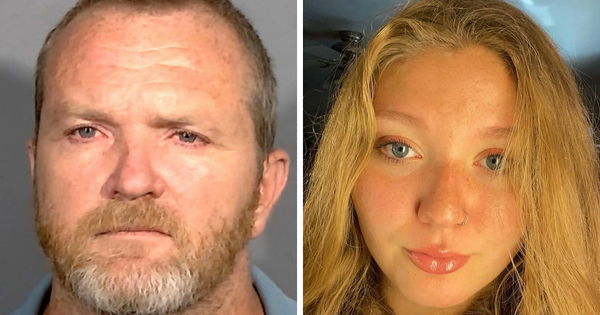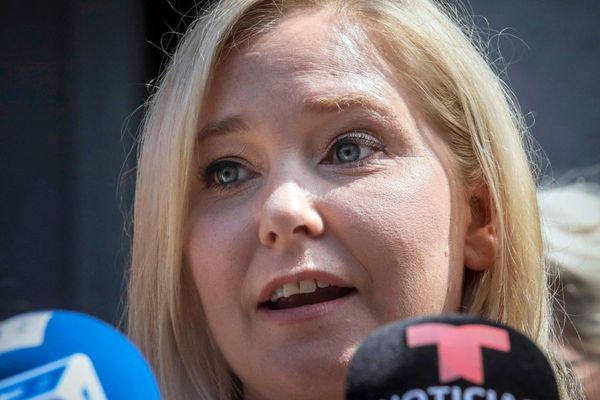
RFI is one of 12 international media outlets taking part in the Gaza Project, a collaborative investigation into the threats Palestinian journalists face covering the war in the Gaza Strip, coordinated by the Forbidden Stories consortium. Part One is the story of Fadi al-Wahidi, who was paralysed after being hit in the neck by a bullet. A meticulous reconstruction of the events shows that he was easily identifiable as a journalist.
Fadi al-Wahidi, 25, doesn't know if he will ever walk again. On 9 October, 2024, a bullet entered his neck between the second and third vertebrae, causing serious injury to his spinal cord and paralysing both his legs. For now, he is confined to a hospital bed in Cairo, Egypt.
"My spinal cord was severed. As a result, I'm a paraplegic," explains al-Wahidi, who Forbidden Stories journalists were able to interview on several occasions.
"I constantly feel electric shocks in my hands. This sensation never leaves me. It stops me sleeping at night, and sometimes even during the day. The painkillers I'm taking aren't working."
Press vest
Last autumn, he was working as a cameraman for the Qatari television channel Al Jazeera, documenting the situation for Palestinians in the north of the Gaza Strip who had been forced to flee the area in the midst of an Israeli offensive.
On 9 October "there was a ground operation going on. I was there just to film my colleague Anas al-Sharif, who was reporting on the displacement of people," al-Wahidi recounted. He was filming on streets he knows well: the young man comes from Jabaliya, where the Israeli offensive was taking place.
"We had heard that random bombardments had targeted civilian homes," said al-Wahidi, "and people fled in a hurry, without being able to take anything with them. That day, people didn't know where to take refuge. I remember that they settled on the ground, for lack of anything better to do."
Macron urges Israel to 'put an end to strikes' on Gaza, Lebanon
Several media teams, including one from Al Jazeera that included al-Wahidi and al-Sharif, were at work in the Al Saftawi neighbourhood covering the events, when shots rang out in the afternoon. The moment was filmed by al-Wahidi himself: a video-selfie captured the moment his colleagues tried to flee the danger. There are 16 seconds of footage of them frantically running through the streets of Gaza, then the recording stops. The last image freezes on the face of the young cameraman.

"To this day, those shots are still ringing in my ears," said al-Wahidi, "bullets whistling and ricocheting off the doors and walls next to me. They wanted to kill me and my colleagues by targeting us directly."
Al-Wahidi lost consciousness. A video shows him lying face down on the ground. For several minutes, his colleagues were unable to come to his aid, as they too were in danger of being hit.
Another video shows four men evacuating the unconscious cameraman. Al-Wahidi, still wearing his press vest, clearly marked with the word "press", was carried to a car and taken to Gaza's al Shifa hospital. Forbidden Stories was able to access his medical file and speak to the doctor who operated on him, who confirmed the bullet wound to the neck, damage to the spinal cord and paralysis in both legs.
Outside the combat zone
Al-Wahidi was hit by this shot outside an area that was due to be evacuated. The day before, on 8 October, the Israeli army published a map in Arabic on its X account (formerly Twitter) showing that it was carrying out large-scale operations in the Jabaliya camp. The post calls on residents to leave the area "immediately" and head for the south of the Gaza Strip.
"Forces from the 162nd Division will soon be operating in this area from the air and on the ground," the Israeli army post stated. Using geolocation tools, Forbidden Stories confirmed that the television crews, including the Al Jazeera crew comprising al-Wahidi and al-Sharif, were indeed outside that area on 9 October, the day al-Wahidi was shot.
Netanyahu offers Hamas leaders Gaza exit but demands group disarm
In addition to their press vests, the journalists had deployed image transmission equipment that helped to identify them as news professionals. The presence of this equipment is confirmed by the images documenting the events.
Human gunman or drone?
Was journalist Fadi al-Wahidi hit by a human gunman or by a quadcopter drone? This question remains unanswered, even though witnesses to the scene attest to the presence of such a device at the time al-Wahidi was hit. "Suddenly, as we were filming, a reconnaissance drone started firing at us," recalled al-Sharif.
Islam Bader and Mohammed Shaheen are fellow Palestinian journalists who were also there at the time of the shooting. "Without a shadow of a doubt, it was a quadcopter," said Bader. "During the war, we got used to recognising their noise," added Shaheen.
Al-Wahidi, for his part, was unable to see the drone his colleagues spoke about. "I didn't see the quadcopter. I didn't have time to look around. I had to run," he recalled.
Gazans flee southern city of Rafah after Israel military orders evacuation
Are quadcopter drones capable of precision fire being deployed by the Israeli army in the Gaza Strip? "The technology exists and will probably one day be deployed by a state or non-state actor," according to James Patton Rogers, a drone specialist at Cornell University, consulted by Forbidden Stories. He stressed, however, that it is impossible to confirm its use in this case, in the absence of images.
The Israeli army did not respond to our questions about the use of such devices and rejected "allegations of systemic attacks against journalists" assuring us that it only "strikes members of armed groups and individuals directly involved in hostilities".
Trapped in Gaza
Al-Wahidi was initially treated in the Gaza Strip, where the lack of appropriate treatment meant he had to change hospitals several times. But despite the gravity of his injuries, the Israeli authorities refused to transfer him out of Palestinian territory to be treated in Egypt.

The request was made by Gisha, an Israeli human rights organisation which aims to protect the freedom of movement of Palestinians, to COGAT, the Israeli army office responsible for coordination in the Occupied Palestinian Territories. In a response dated 13 January, 2025, COGAT replied: "With regard to your client Fadi al-Wahidi, we would like to inform you that after studying the case, the State of Israel is opposed to his transfer. This opposition is based on a security refusal." There was no justification given for this.
The situation was finally resolved in February, after the ceasefire in the Gaza Strip came into effect on 19 January, 2025. It had taken 122 days for al-Wahidi to be transferred to Egypt to receive the treatment he needed.
"I imagined a bright future after the war, both for myself and for my loved ones," he said, "but since my injury, I no longer think about the future. All I want is to be able to walk again one day."
According to the Committee to Protect Journalists, more than 170 media professionals have been killed in the Gaza Strip since the start of the war in October 2023. A few days before the publication of this report, Hossam Shabat, a Palestinian journalist working for Al Jazeera, was the victim of an Israeli strike targeting his car in Beit Lahya in the north of the Palestinian enclave.







